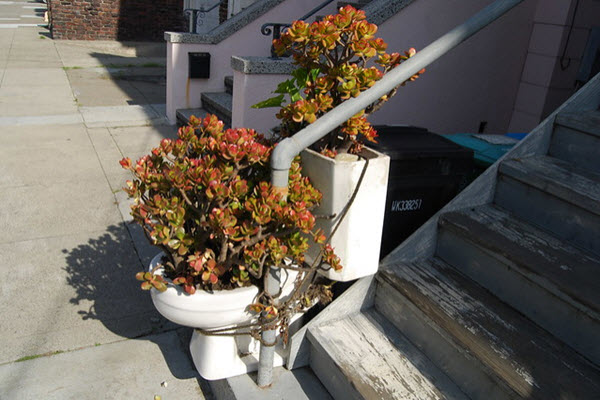In the past couple of years, I’ve heard many local SEOs and a few hands-on business owners make a comment to the effect of, “Google Maps doesn’t approve anti-spam edits anymore.” There’s more than grain of truth to that.
Google never has been good about policing the local map enough to show businesses that playing it straight is worth the restraint. In recent years Google doesn’t seem to have gotten any better and may even have gotten worse, especially given its more-relaxed policies toward non-in-person businesses since 2020.
You may already have an objection to the effect of, “I’m a ‘live and let live’ type” or “I don’t want to rat anyone out.” My philosophy here is simple: if competitors are to outrank you, at least make them work for it. If you want to lose visibility and most likely customers/clients/patients to businesses that are only better at spamming the map, then that’s your choice. For the purposes of this post, I’ll assume you’re interested in making sure your competitors stick to the same rules you do.
You may wonder whether it’s worth bothering to report competitors’ Google Maps spam at all. I’ve found that it is. Yes, it’s tedious. No, you shouldn’t need to be Google’s janitor and mop the map. But you do all kinds of things you don’t want to do, and so the real question is how much time you’ll be wasting.
Your Google Maps spam reporting can get to about a 60% success rate, if my recent experience (2021-2022) is any indication. In this case, I’m referring to my results for 5 different clients for whom I’m doing “suggest an edit” spam patrol with relative alacrity: 1 contractor, 2 doctors, and 2 lawyers. (I do it for others, too, but those are the 5 I happen to have done the best job of tracking recently, and I had to pick a doable “sample size.”) By the way, though many of my clients fall into one of those categories, I work with people in all sorts of industries, and I’ve got about the same batting average in those other fields. Different industries vary much more in terms of how much spam there is than in terms of how likely Google is to approve well-founded edits.
For those 5 clients, I’ve had a grand total of 87 edits approved out of 147 submitted, which is good for a 59.2% batting average, which I’ve taken the liberty of rounding up to 60% for the sake of naming this post. For 3 out of those clients I have a wingman: a helper who submits similar edits to Google and occasionally fills out the redressal form, and who helps me to get Google’s attention more than I can as a Local Guide flying solo.
Different types of edits have different success rates. As you may know, there are two basic forms of Google Maps spam that inflict the most pain on play-it-straight businesses: (1) name spam, including keyword-stuffing and fake names, and (2) bogus Google Business Profile pages that shouldn’t even be on the map. In the first case, you want Google to change the business’s name to whatever the real name is. In the second case, you want Google to remove the page altogether.
Of the 63 edits in which we requested the removal of a bogus Google Business Profile, 40 edits were approved. That’s a 63% success rate for name fixes.
Of the 84 edits in which we requested the removal of a bogus Google Business Profile, 47 edits were approved, which means a 55% success rate for removal requests.
My success rate by myself is pretty good (and long has been), but it’s better when my helper lays down some cover fire. For 2 of the 5 clients I looked at, I was the only one making edits. My success rate alone has been exactly 50% (16 out of 32). With my helper involved for the other 3 clients in this little study, 71 edits out of 115 have been approved, which makes for a 62% multi-person success rate. (In the past, I’ve done most spam-reporting by myself, with a success rate somewhere around that 50% average.)
You may be wondering about the specific clients / industries. For obvious reasons, I can’t name names, but here’s a basic breakdown of what happened for whom:
Contractor: 38 edits approved out of 62 submitted. This one involved my helper. For removal requests, we got 32 out of 55 pages removed.
1st doctor: 22 edits approved out of 34 submitted. This one involved my helper. By the way, this is a multi-location dental practice. For one of the locations we got 18 out of 21 edits to stick, and 9 out of 9 removal requests approved.
2nd doctor: 10 edits approved out of 19 submitted. For removal request, I got 0 out of 3 pages removed.
1st lawyer: 11 edits approved out of 19 submitted. This one involved my helper. For removal requests, we got 4 out of 14 pages removed.
2nd lawyer: 6 edits approved out of 13 submitted. For removal requests, I got 2 out of 3 pages removed.
Keep in mind that all of the above numbers are subject to change over time. Some edits may still get approved, even though Google hasn’t approved them yet. (It can take months.) Some extra-sneaky spammers we may have missed. Some of the competitors will keep hacking away: they’ll create a new fake listing or keyword-stuff their name again, and we’ll go back and forth.
I mention those numbers mainly as a pep talk, to show that spam patrol can be worth your while. Google will ignore more of your requests than you’d like, but probably not as many as you fear. There’s a certain chunk of the problem you can remedy, regardless of your industry. The redressal form can help for removing especially stubborn or foul spam, but “suggest an edit” still is your bread and butter. Getting even one more person to send in edits also can help, but you can make a big dent even by yourself.
You can reduce the amount of spam whether it’s a huge problem or a small problem, and it’s worth the trouble either way. If you make spam patrol part of your long-term routine, you may be pleasantly surprised at how the rest of your local SEO effort seems to get you farther than it used to.
—
What’s your success rate in getting Maps spam fixed or removed?
What (if anything) has seemed to help?
Where have you hit a wall?
Leave a comment!



